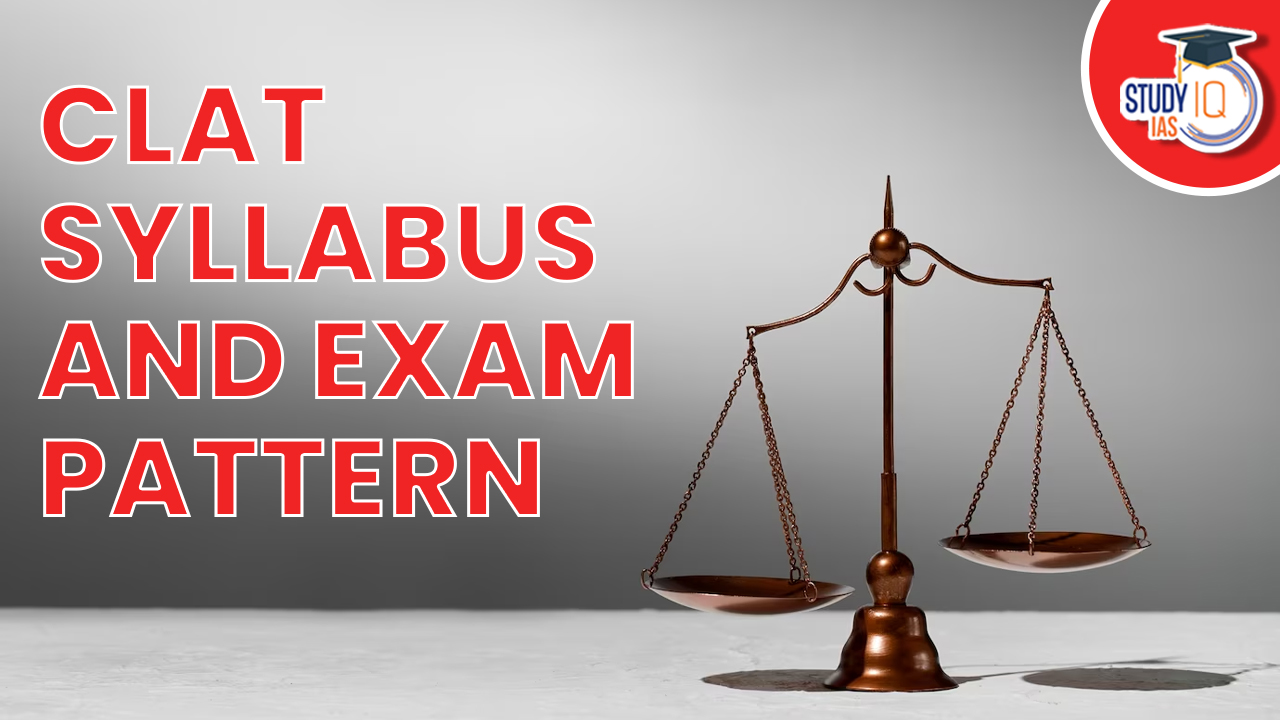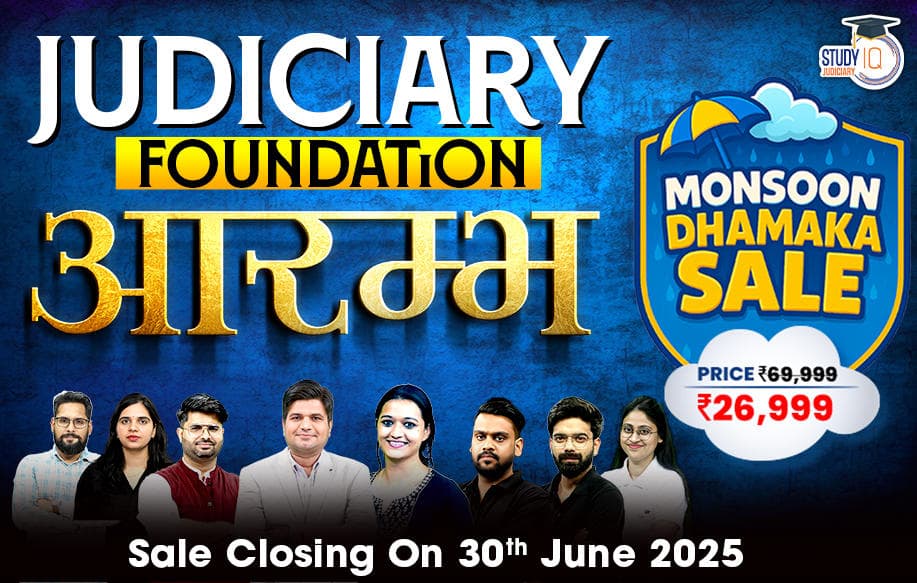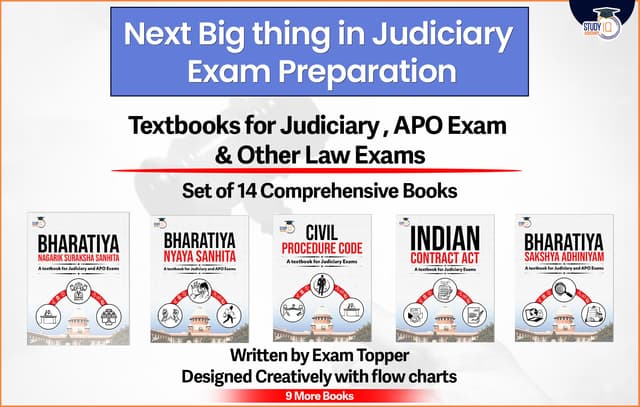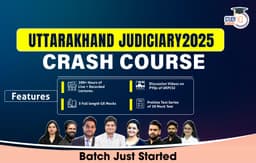Table of Contents
CLAT Syllabus
The Common legal Admission Test (CLAT) is a national-level entrance exam for admission to undergraduate and postgraduate legal programs that is administered by 22 National Law Universities in India. CLAT is organized by the Consortium of National Law Universities, a group of representative universities. Numerous connected colleges and organizations also use the CLAT test for recruitment and admissions, respectively. For all admissions to the 5-year integrated LL.B. and LL.M. programs that start in the academic year 2024-2025, the CLAT 2024 will be used.
CLAT Syllabus Overview
There are five sections in CLAT 2024, as was already indicated. There are certain significant subjects that will be covered in each segment of the test. All of these topics covered by the CLAT UG syllabus 2024 will have a set amount of weight in the exam. Below is a rough estimate of the number of questions from each segment that were asked and CLAT Syllabus Overview.
|
CLAT Syllabus Overview |
|
|
Particulars |
Details |
|
Maximum Marks |
120 Marks |
|
CLAT 2024 exam duration |
120 minutes |
|
Number of questions |
120 |
|
Marking scheme |
1 mark for each correct answer 0.25 negative marking for each incorrect response |
CLAT Syllabus for UG
The examination structure and CLAT Syllabus for UG have fundamentally not changed. So, law students who intend to take the Common Law Admission Test should start getting ready right away. The UG CLAT Syllabus and the PG CLAT Syllabus are completely different from one another. English, legal aptitude, logical thinking, arithmetic, and general knowledge, including current events, will all be covered in CLAT questions. The CLAT Syllabus should be thoroughly reviewed as the first stage in your preparation. Check the CLAT Syllabus for UG below
| CLAT Syllabus for UG | |
| Subject | Syllabus |
| English Language | Passage Comprehension
|
| Current Affairs and General Knowledge | Passage-based questions
Required Knowledge
|
| Legal Reasoning | Passage-based questions
|
| Logical Reasoning | Passage-based questions
|
| Quantitative Techniques | Passage/Graphs/Other Representations
|
CLAT Syllabus Weightage
The CLAT 2024 test structure indicates how much importance each section of the Common Law Admission Test is given. Candidates should focus on each section to get a high overall CLAT score in 2024. To decide which area to focus on more when preparing for the CLAT exam, it’s also essential to conduct a SWOT analysis on each component. Consult the test structure to determine the weighting for the CLAT 2024 curriculum components.
|
Subject Areas with weightage: |
No of Questions |
Weightage (%) |
|
English Language |
22-26 |
20% |
|
Current Affairs, including General Knowledge |
28-32 |
25% |
|
Legal Reasoning |
28-32 |
25% |
|
Logical Reasoning |
22-26 |
20% |
|
Quantitative Techniques |
10-14 |
10% |
CLAT Syllabus 2024 for English Language
The CLAT 2024 exam’s English component consists of comprehension-style passage-based questions. The capacity to comprehend and use language, make inferences and conclusions, summarize passages, and recognize arguments and points of view are all tested by these extensive passage questions. Candidates are encouraged to read Word Power Made Easy by Norman Lewis and High School English Grammar and Composition by Wren & Martin in order to get ready for the English component of the CLAT 2024. It is always advised to read publications like The Hindu or The Indian Express to get ready for this section. The following provides the complete CLAT English Language syllabus:
|
Particulars |
Important details |
|
Total weightage |
20% |
|
Type of questions asked |
Comprehension-type passage-based questions – Static general knowledge and current affairs |
|
Source material or content of passages |
News, journalistic sources, and non-fiction writing. |
|
Ability tested |
Awareness of following topics
|
|
Key Topics |
|
|
Standard of questions |
12th standard |
CLAT Syllabus 2024 for General Knowledge and Current Affairs
There are comprehension-style passage-based questions from Static general knowledge and current affairs in this portion of the CLAT 2024 syllabus. Questions on current events in India and throughout the world in the areas of arts and culture, international affairs, and historical events and their significance will make up the General Knowledge portion. Check details on CLAT Syllabus 2024 for General Knowledge and Current Affairs below:
|
Particulars |
Important details |
|
Total weightage |
25% |
|
Type of questions asked |
Comprehension-type passage-based questions – Static general knowledge and current affairs |
|
Source material or content of passages |
News, journalistic sources, and non-fiction writing. |
|
Ability tested |
Awareness of following topics
|
|
Key Topics |
|
|
Standard of questions |
12th standard |
CLAT Syllabus 2024 for Legal Reasoning
The CLAT 2024 legal aptitude part will include 450-word comprehension-style passages. Questions of the objective type will be asked after the passages of the comprehension kind. The candidates’ abilities in identifying and inferring the rules and principles given in the passage, applying the rules and principles to various fact situations, and understanding how changes to the rules or principles may change their application to various fact situations will all be tested in the legal reasoning section.
|
Particulars |
Important details |
|
Total weightage |
25% |
|
Type of questions asked |
Comprehension-type passage of 450 words each followed by objective-type questions |
|
Content of passages |
Fact situations or scenarios involving legal matters, public policy questions, or moral philosophical inquiries. |
|
Focus area |
|
|
Key Topics |
|
|
Standard of questions |
12th standard |
CLAT Syllabus 2024 for Logical Reasoning
About 20% of the questions on the CLAT 2024’s Logical Reasoning portion will be new. These quizzes will be based on passages that are 300 words long. The CLAT exam’s logical reasoning section assesses candidates’ capacity to recognize arguments, their premises, and their conclusions, analyze patterns of reasoning critically, determine how conclusions may depend on specific premises or evidence, infer what follows from the passage and apply these inferences to new situations, draw relationships and analogies, recognize contradictions and equivalence, and rate the strength of arguments.
|
Particulars |
Important details |
|
Total weightage |
20% |
|
Type of questions asked |
Passage-based (300-word long) objective questions |
|
Content of passages |
Based on sets and arguments, puzzles, diagrams, relationships and others |
|
Skills to be tested |
|
|
Key Topics |
|
|
Standard of questions |
12th standard |
CLAT Syllabus 2024 for Quantitative Techniques
A sequence of questions will follow collections of facts or propositions, graphs, or other textual, visual, or diagrammatic representations of numerical data in the CLAT Quantitative Techniques segment of the exam. The purpose of this component of the CLAT 2024 is to assess candidates’ abilities to derive, infer, manipulate, and apply various 10th-standard mathematical operations to the numerical data presented in such passages, graphs, or other representations.
|
Particulars |
Important details |
|
Total weightage |
10% |
|
Type of questions asked |
Sets of facts or propositions, graphs, or other textual, pictorial, or diagrammatic representations of numerical information, followed by a series of questions. |
|
Skills to be tested |
|
|
Key Topics |
|
|
Standard of questions |
Class 10th |
CLAT Syllabus for PG
The examination structure and CLAT Syllabus for PG have fundamentally not changed. So, law students who intend to take the Common Law Admission Test should start getting ready right away. Check the CLAT Syllabus for PG below.
| CLAT Syllabus for PG | |
| Particulars | Details |
| Constitutional Law |
|
| Jurisprudence |
|
| Administrative Law |
|
| Law of Contracts |
|
| Torts |
|
| Criminal Law |
|
| Property Law |
|
| Public International Law |
|
| Environmental Law |
|
| Labour and Industrial Law |
|
CLAT 2024 Exam Pattern
The question paper for the UG Course will only be available in English and will be administered in pen-and-paper format for the CLAT 2024 test. The CLAT 2024 exam pattern includes the amount of questions, total time, questions by section, the type of questions, the marking scheme, and numerous other important details. With 120 multiple-choice questions costing one point each, the CLAT 2024 UG exam will last two hours. For every erroneous answer, a quarter of a point is deducted. Visit this page for more information about the CLAT test pattern 2024.
| CLAT Exam Pattern | |
| Particulars | Details |
| Exam Mode | Online |
| Language | English |
| Question Type | Objective Type |
| Total No of Question | CLAT UG – 120 CLAT PG – 120 – No essay section in CLAT PG” |
| CLAT Exam Duration | 2 hours |
| Marking Scheme | 1 Mark will be awarded for each correct answer |
| Negative marking | 0.25 marks |


 Daily Quiz 05 July 2025
Daily Quiz 05 July 2025
 SSC MTS Apply Online for 1075 Posts – ...
SSC MTS Apply Online for 1075 Posts – ...
 Dynamic Pricing: What It Is and Why It's...
Dynamic Pricing: What It Is and Why It's...












